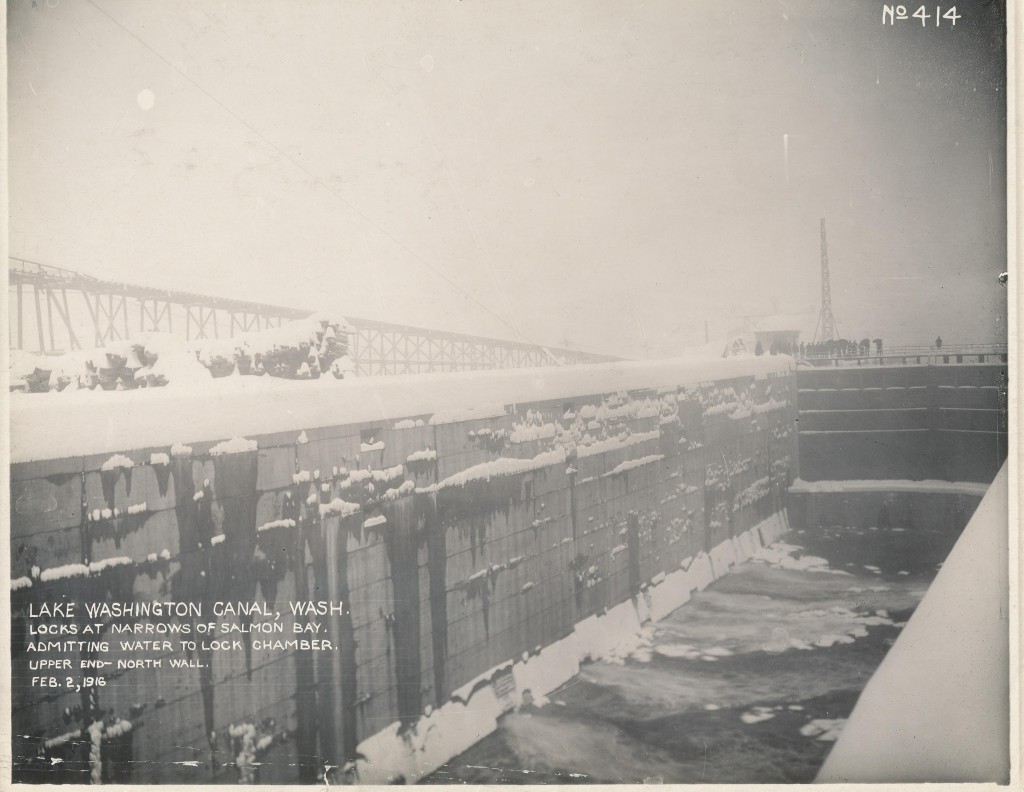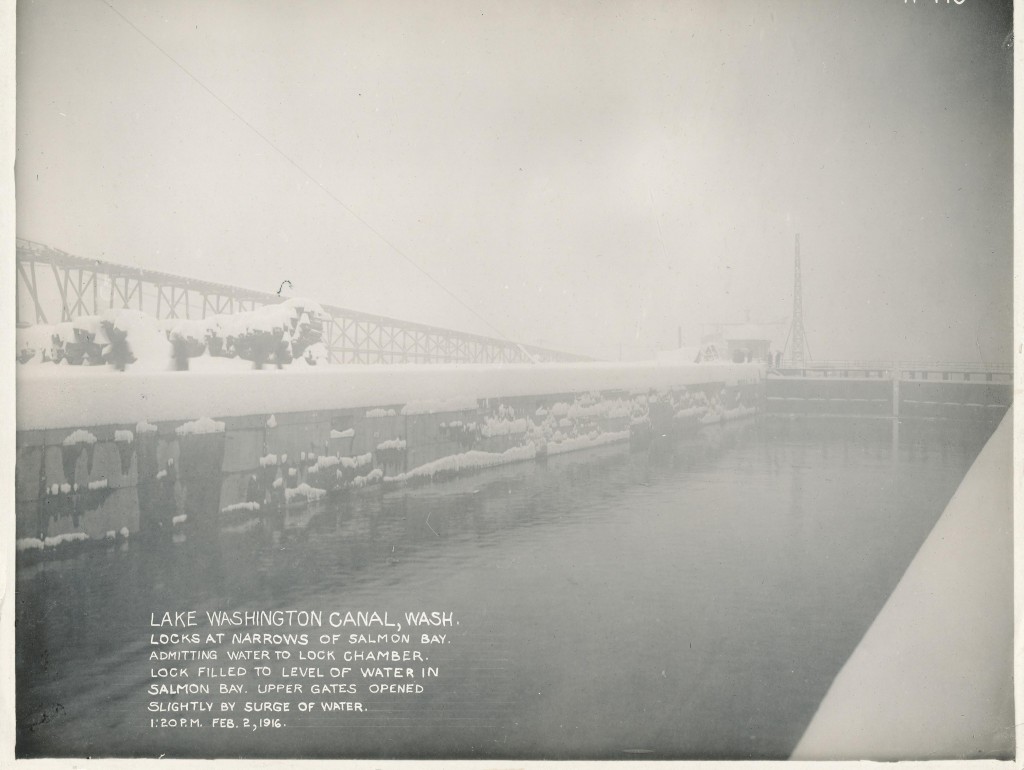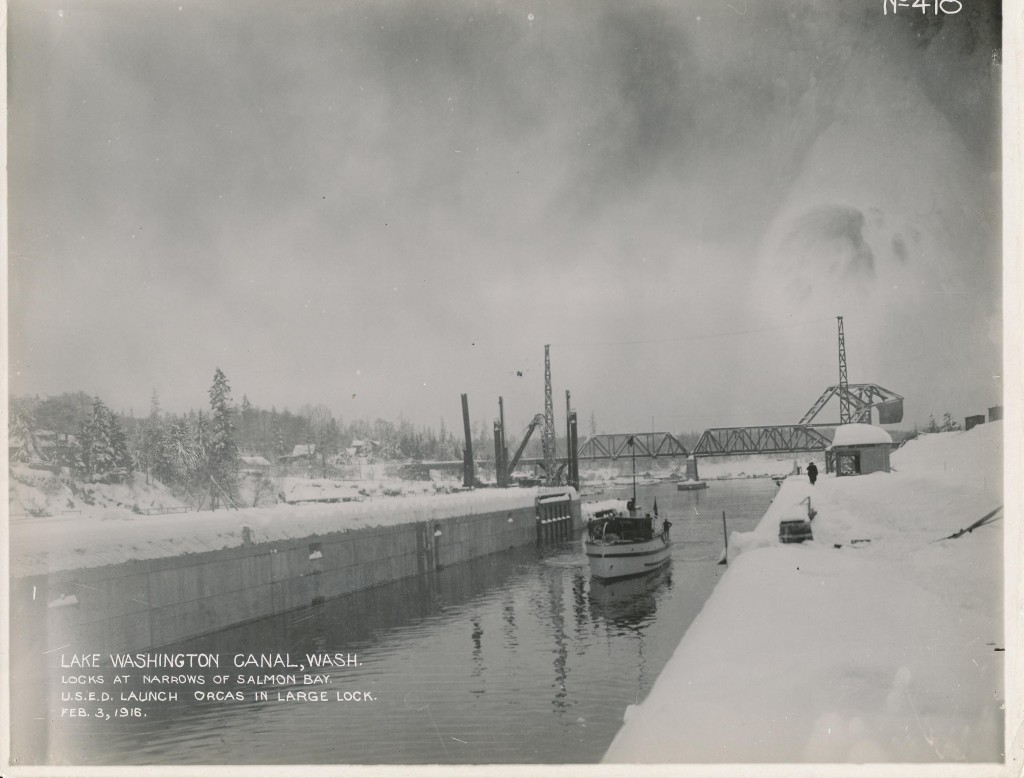Today begins a 17-month-long commemoration of one of the great events in Seattle history. On July 4, 1917, the Lake Washington Ship Canal and Locks officially opened. It was the culmination of a multi-year project to connect Puget Sound to Lake Washington via Salmon Bay and Lake Union. I have written previously about this endeavor but would like to highlight one of the more significant, early construction milestones.
On February 2, 1916, fresh water from Salmon Bay entered the bigger of the two locks in the canal system. The lock was filled in 32 minutes with enough water so that it was equal to the level of Salmon Bay. As you can see from the second photo, there was enough pressure on the lock gate from Salmon Bay to push the gate open slightly. The February 3, 1916, Seattle Times called the event “the opening of the world’s greatest tidal basin.” (As you can see from the photo, snow covered the ground from one of the biggest snowstorms in Seattle history.)


After filling the locks, the Army Corps of Engineers opened the gates completely. This then became the route for tidal water to flow into Salmon Bay. At high tide, salt water would enter the bay and flood it. At low tide, water would drain out, exposing several acres of tide flats.
Prior to February 2, tidal salt water had entered Salmon Bay on the south side of the locks, where the present day spill gates are located. With the gates open, the Corps closed off the south side route and began to build the spill gate system, which is basically a dam helping to keep Salmon Bay at a constant level between 20 and 22 feet above sea level.
On February 3, the first boat, the Orcas, entered the locks and passed through to Salmon Bay. The locks would remain open until July 12, 1916, when the dam/spill gate was finished, and the Corps began to flood Salmon Bay with water from Lake Union. Salmon Bay would soon become the reservoir we now know.

It is lovely to have these details expressed so clearly. I am wondering if this blog posting is copyrighted and if it would be a legal error (I suspect it is) to post the whole thing (not just a link to it) on our website.